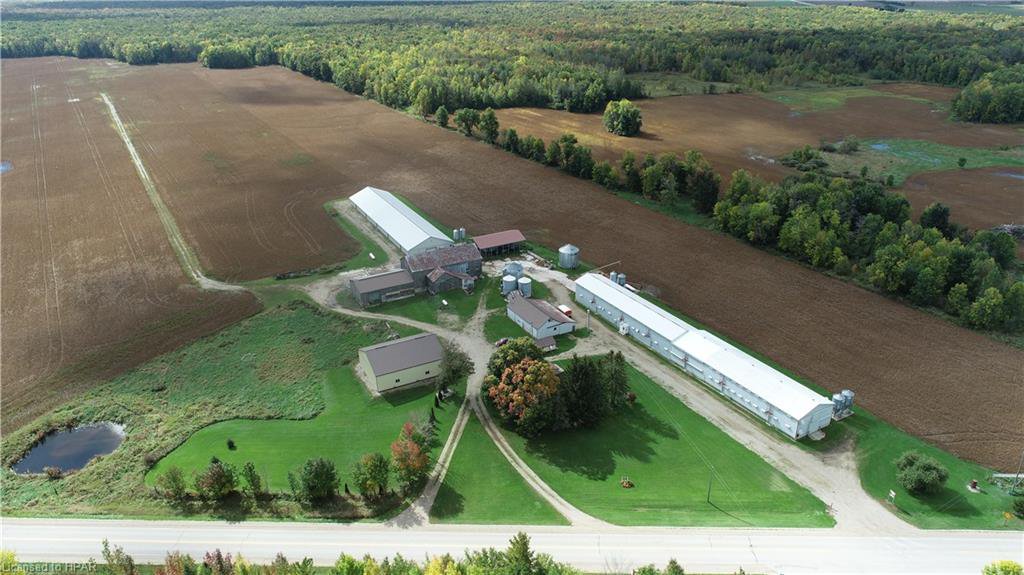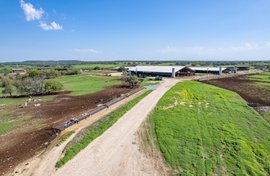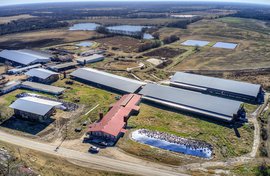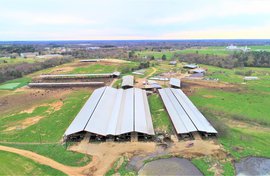About United States
The United States of America comprises 50 states, 49 of which are on the North-American mainland and one in the Pacific Ocean. In the north, the United States shares its border with Canada, and in the south with Mexico. The Atlantic Ocean lies to the east of the United States, and the Pacific Ocean lies on its west coast. Washington D.C., named after the first President of the United States, is the country’s capital. A national holiday is the 4th of July, Independence Day, the day on which democracy was born in 1776. The currency of the United States is the American dollar. At 9,629,047 km2, the United States is approximately the same size as Canada. Along the west coast of the United States, there are long mountain ranges. The central part of the country is relatively flat, comprising i.a. dry prairie lands, the Great Plains. At many places in North America, deep basins were eroded by the land ice, creating lakes later on. In the west of the Great Plains, there are a number of areas without any drainage to the sea, which created salty lakes such as the Great Salt Lake. Large rivers in the United States are the Mississippi and, in the north, the Yukon and Mackenzie. The present population of the United States consists of very diverse groups of people. At the end of the sixties, massive flows of immigrants were set in motion from South America, Asia, and Africa, while the number of immigrants from Europe decreased during the same period. Due to immigration flows, a large percentage of the total population consists of ethnic minorities. The original inhabitants, the Indians, form only a small part of the present population. On 1 July 2008, the total population of the United States was over 290 million. The spread of population is very uneven. In Alaska and the dry regions in the west, the population density is below 10 per km2, whereas in the east of the United States, around the Great Lakes, and in parts of Texas and California, areas can be found with very high population densities. The attraction of the southern states is due to the favourable climate in these states and the economic revival that took place there in the seventies and eighties. About 76% of the population live in urban areas, which include towns with 2,500 inhabitants or more. Most urbanization can be found in California and a number of states in the north-east of the country. The southern states are relatively least urbanized.
American society differs from Dutch society in a number of respects. The United States has, among other things, a different educational system and different provisions for social security benefits. Public holidays may also differ, mainly due to different historical backgrounds. Social security benefits in the United States are at a lower level than in the Netherlands, and they are tax-funded. Many social security benefits are organized differently from state to state. Furthermore, many insurance plans are not collectively organized but have to be entered into on an individual basis. The United States has the following social security benefits (“welfare benefits”): • Unemployment benefit (An unemployment benefit covers a period of 26 weeks. This benefit is for a maximum of $300 per week. After that, food vouchers are available to anybody still out of work and compensation is paid towards the cost of rent and electricity.) • Occupational disability insurance • Widow’s and orphan’s pension • Healthcare allowance for the elderly and the disabled
Insurance costs can be fairly high. As a result, not everybody is able to participate in a proper insurance plan. About 20% of Americans have no health insurance. The present educational system was developed in the 19th century. It differs from educational systems in other western countries, such as the Netherlands, in three respects. Firstly, Americans look at education as a solution for several social problems. Secondly, Americans have great confidence in the power of education, so that Americans attend school relatively more often and longer. Lastly, education in the United States is not nationally organized and funded. Public education is primarily the responsibility of the individual States and the school districts. Free public education up to and including high school is funded by (individual) State- or regional governments. However, higher education is not funded by these governments but by the individual student and his/her family, supported by any public or private resources to which they may be eligible. Alternatively, they may take out study loans. A point-by-point description of the educational system is given below. In most western countries, such as the Netherlands, healthcare is funded by the government. These countries regard healthcare as a universal right. In the United States, healthcare is mainly funded by private organizations. The American government only provides funding for some health insurance programmes, but these are only available to a limited group of people such as the poor and the elderly. Americans pay for the costs of their health insurance in different ways. Employees may pay for their health insurance by allowing their employer to deduct a certain amount from their wages. Other employees work for an employer who pays their health insurance directly. People not eligible for health insurance via their jobs or a government programme, that is, most self-employed persons, can get privately insured by paying the costs of this directly to the insurance company. Religion plays an important part in the United States. About 56% of the population are Protestants. There are many different denominations within Protestantism, ranging from fundamentalist to liberal. About 26% of the population belongs to the Roman Catholic Church. The Jewish faith is adhered to by 2.6% of the population. Buddhists, Muslims, and Hindus form small minorities in the United States.
The climate in the United Sates is very diverse. Especially in winter, temperature fluctuations are very pronounced. Due to the influx of Arctic air currents, winters get increasingly colder in more northerly directions. The climate in the northerly states, with their long, cold winters, in which there is a lot of rain and snowfall, and their mild summers, is very different from the climate in the southern parts of the country. The southern states have a subtropical climate with hot, humid summers and mild winters. The temperatures in southern states typically rise far above 30ºC in the months of June, July, and August. In the south-western desert areas, temperatures may rise to over 40ºC. From east to west, precipitation decreases until it eventually reaches the point where no crops can be grown without irrigation. A number of desert areas in Arizona, Nevada, and southern California have less than 125 mm of precipitation per year. Not all western areas are dry. Indeed, one of the wettest areas of the United States is in the north-west.
The United States has been the largest exporter of agricultural produce in the world for a long time now. Farm operations can generally be characterized as medium-sized and large operations with advanced mechanization. Mainly due to climatological and geographic circumstances, there are different agricultural zones. The north east and the areas around the Great Lakes, for instance, are known as a region where a lot of milk is produced, the so-called ‘dairy belt’. Moreover, the east coast has a lot of market-gardening, fruit growing, and poultry farming. The region south of the ‘dairy belt’ is known as the ‘corn soy belt’, i.e. a region where maize and soybeans, which are so important to livestock farming, are grown. In the south, where the cotton belt would penetrate deep into Texas, most cotton plantations have now been substituted by mainly mixed farms. On the coasts of Texas and Florida, citrus fruit, sugar cane, and rice are grown. In California, a lot of vegetables and fruit are grown, and there is a large-scale wine-growing sector. The Mid-West is known as the ‘wheat belt’, i.e. the grain basket of the United States. With regard to livestock farming, the United States is the world’s largest producer. Cattle-farming, especially of feeder cattle, mainly takes place in the States of Texas, Iowa, Nebraska, Kansas, Missouri and Oklahoma. Hog farming is mainly located in the north. There is large-scale poultry farming (chickens and turkeys) in California, New England, North Carolina and Georgia. Dairy farming is mainly located in the north, north-east, and in the vicinity of large cities. Dairy cattle As in the Netherlands, dairy farming in the United States has for quite some time been developing towards fewer, but larger operations, with a similar development towards fewer, but more productive cows. In 1959, there were still nearly 2 million dairy farms in the United States, whereas this number had dropped to only 91,990 dairy farms in 2002. Dairy farming in the west of the United States usually consists of large operations, with 500-1500 dairy cows. Due to their large size, these farms have a lower cost price that the dairy farms in the north-east of the country, where farms generally have a size of 50-150 dairy cows. The key characteristic of dairy policies in the United States is that there is no quota system. Apart from that, dairy policies are a complex set of regulations at several levels. Provisions at the federal level have been laid down in the form of marketing regulations. The aim of these regulations is to stabilize market conditions, so that dairy farmers and consumers can benefit from a stable market. In addition, it should at all times be possible to guarantee the consumer an adequate supply of dairy and dairy products. Many Dutch people emigrating to the United States in order to start a dairy operation there, decide that they need to construct new buildings. An advantage of new buildings is that one’s own requirements and management methods may be taken into account. Regulations regarding new dairy farm buildings vary from state to state and depend on the size of the operation to be set up. Some states only require a building plan. A number of states require a permit application for whoever wants to build a dairy farm of more than 700 cows. A fertilization plan may be required as well.



